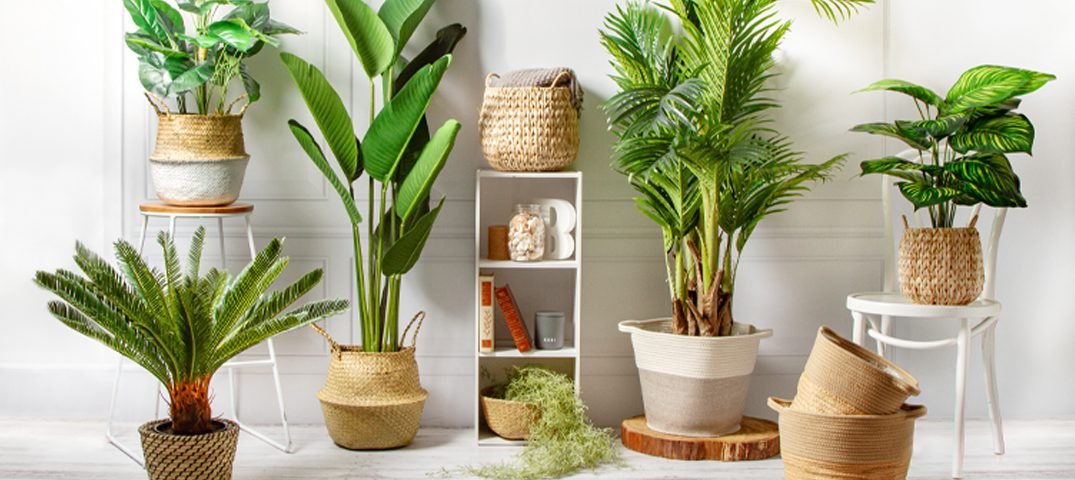Welcome readers to our comprehensive guide on selecting and caring for home-friendly plants. In today’s fast-paced world, creating a calming and inviting atmosphere in our living spaces is essential. One way to achieve this is by incorporating indoor plants into our home decor.
Not only do these green additions beautify our surroundings, but they also offer a range of benefits for our physical and mental well-being. This blog post aims to provide you with a detailed guide on choosing Online plants that are suitable for indoor spaces.
I. Benefits of Indoor Plants:
Indoor plants offer numerous benefits that go beyond their aesthetic appeal. Firstly, they improve the air quality in our homes by absorbing carbon dioxide and releasing oxygen during photosynthesis. This natural air filtration system helps to remove harmful toxins from the environment, promoting cleaner and healthier indoor air.
Additionally, having plants in our living spaces has increased productivity and creativity while reducing stress levels. The presence of nature indoors creates a sense of tranquillity and connection to the natural world, resulting in a more relaxed and focused mindset.
II. Factors to Consider When Choosing Home-Friendly Plants:
When selecting indoor plants, several factors must be considered to ensure their successful growth and longevity. These factors include light requirements, space availability, maintenance level, and pet-friendliness.
A. Light Requirements:
Different plants have varying light requirements, ranging from low to medium to high. It’s crucial to understand the lighting conditions in your home to choose plants that will thrive in those areas. For example, rooms with ample natural light, such as south-facing windows, are ideal for plants that require high light levels. On the other hand, rooms with limited natural light, such as north-facing windows, are better suited for plants that can tolerate low light conditions. Some examples of low light plants include pothos, snake plants, and ZZ plants, while medium-light plants include peace lilies, spider plants, and Chinese evergreens. Highlight plants include succulents, cacti, and certain varieties of palms.
B. Space Availability:
Considering the available space in your home is crucial when selecting indoor plants. If you live in a small apartment or have limited floor space, opting for compact plants or utilising vertical gardening techniques can be a great solution. Hanging plants, wall-mounted planters, or shelves with cascading plants are excellent options for maximising space while enjoying the benefits of indoor greenery.
C. Maintenance Level:
The maintenance level of plants varies significantly from species to species. Some plants require frequent watering, while others are more drought-tolerant. If you have a busy schedule or minimal gardening experience, choosing low-maintenance plants that can withstand occasional neglect is best. Succulents and cacti are excellent choices for low-maintenance indoor plants, as they store water in their leaves and stems, allowing them to survive in dry conditions.
D. Pet-Friendly Plants:
For pet owners, it’s essential to choose plants that are safe for their furry companions. Some plant species can be toxic if ingested by pets, causing adverse health effects. Researching and selecting pet-friendly plants that are non-toxic and safe for your cats and dogs is crucial. Some examples of pet-friendly plants include spider plants, Boston ferns, and areca palms.

III. Popular Home-Friendly Plants:
Now that we’ve discussed the factors to consider when selecting indoor plants let’s explore some popular home-friendly plants that are easy to care for and visually appealing.
A. Succulents and Cacti:
Succulents and cacti have gained immense popularity recently due to their unique shapes, textures, and low-maintenance nature. These plants are well-suited for indoor environments as they thrive in dry conditions and require minimal watering. Succulents come in various shapes and sizes, making them versatile choices for different home decor styles. Some popular succulent varieties include echeverias, haworthias, and jade plants. With their spiky exteriors and exciting forms, the Cacti add a touch of desert beauty to any indoor space.
B. Peace Lily:
The peace lily is a classic indoor plant known for its elegant white flowers and air-purifying qualities. This plant is visually stunning and helps remove harmful toxins from the air, making it an excellent choice for improving indoor air quality. Peace lilies thrive in bright, indirect light and prefer to be kept slightly moist. They are relatively low-maintenance and can be a beautiful addition to any room in your home.
C. Snake Plant:
The snake plant, also known as Sansevieria or mother-in-law’s tongue, is a hardy plant that can tolerate many light conditions, including low light. It features tall, upright leaves with striking patterns, making it a visually appealing choice for indoor gardening. Snake plants are known for their air-purifying properties, removing toxins such as formaldehyde and benzene. They prefer well-draining soil and do not require frequent watering, making them perfect for those who forget to water their plants.
IV. Caring for Home-Friendly Plants:
Once you have selected the perfect indoor plants for your home, it’s essential to understand how to care for them to ensure their health and longevity. Here are some critical aspects of plant care to keep in mind:
A. Watering Techniques:
Proper watering is crucial for the well-being of indoor plants. Overwatering can lead to root rot and other diseases, while underwatering can cause dehydration and wilting. It’s important to water plants when the top inch of soil feels dry. However, it’s best to avoid letting the plant sit in standing water, which can lead to root rot. It’s always a good idea to monitor the soil’s moisture level and adjust your watering schedule accordingly.
B. Soil and Fertiliser:
Choosing the suitable soil for your home-friendly plants is essential for their health and growth. Most indoor plants thrive in well-draining soil that retains some moisture while allowing excess water to escape. Adding organic matter, such as compost or peat moss, can improve soil’s texture and water-holding capacity. When fertilising indoor plants, it’s best to use gentle organic fertilisers to promote balanced growth. Slow-release fertilisers or liquid fertilisers diluted to half-strength are good options for indoor gardening.
C. Pruning and Repotting:
Pruning and repotting are essential in maintaining indoor plants’ health and appearance. Pruning involves removing dead or yellowing leaves, promoting new growth, and maintaining the desired shape of the plant. Repotting is necessary when the plant outgrows its current container or when the soil becomes compacted and doesn’t drain properly. It’s essential to follow proper techniques and use clean tools when pruning and repotting to prevent the spread of diseases.
V. Buying Home-Friendly Plants Online:
Buying plants online has become increasingly popular in today’s digital age due to its convenience and wide selection. When purchasing plants online, it’s essential to consider a few key factors to ensure a positive experience. Firstly, choose reputable sellers who specialise in indoor plants and have positive customer reviews.
Look for sellers who provide detailed plant descriptions and care instructions. It’s also crucial to consider the sellers’ return policies and packaging practices to ensure the plants arrive in good condition. Lastly, when buying plants online, remember to choose appropriate pot sizes based on the plant’s current size and growth potential.
Conclusion
In conclusion, selecting and caring for home-friendly plants is a rewarding endeavour that can transform your living spaces into vibrant and soothing environments. The benefits of indoor plants extend beyond their decorative appeal, with improved air quality, increased productivity, and stress reduction being just a few advantages. We hope this guide has equipped you with the knowledge and confidence to incorporate indoor plants into your living spaces and create a healthier, more vibrant environment. Thank you for reading, and we invite you to explore plants online for a wide range of home-friendly plants.





